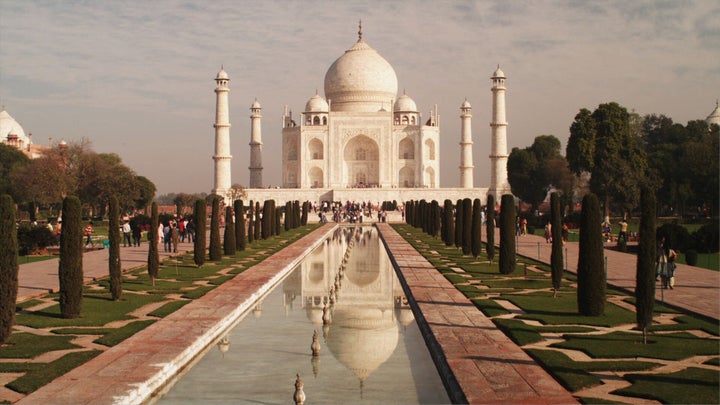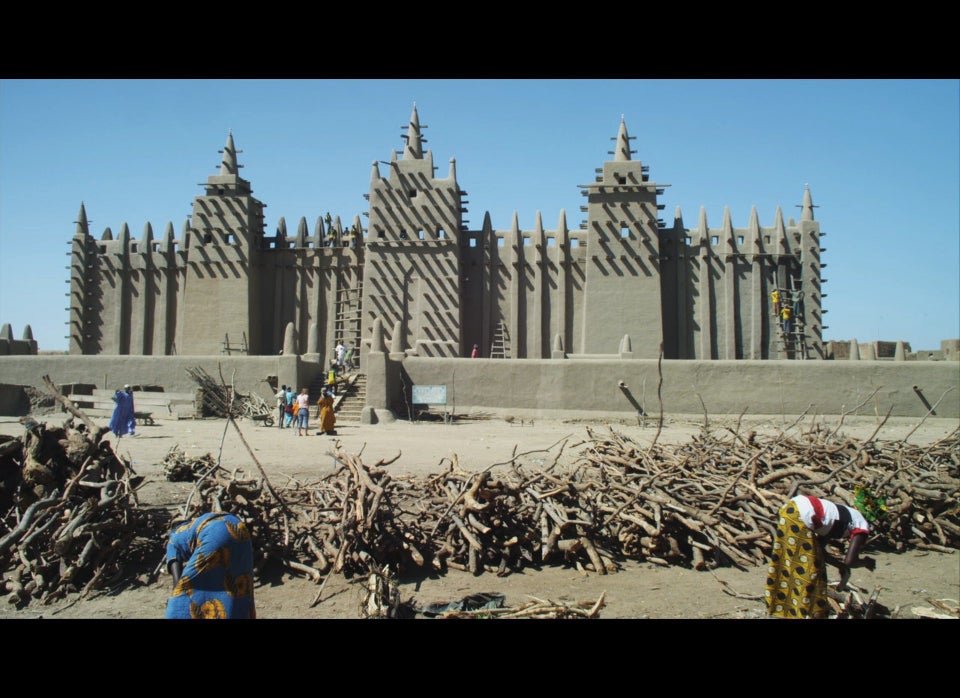
During the production of "Islamic Art: Mirror of the Invisible World," which airs this Friday as part of the PBS Arts Summer Festival, we filmed some of the most stunning examples of Islamic architecture in the world.
Two buildings that represent a great contrast and diversity in Islamic architecture are the Taj Mahal in India, probably the best known Islamic monument and one of the most memorable buildings in human history, and the Great Mosque of Djenne in Mali, the largest mud construction in the world, an astonishing example of indigenous African adobe architecture.
The distinctive profile of the Taj Mahal -- like the Pyramids, the Eiffel Tower or the tower of Pisa -- has become an icon for its native country of India. The Taj's immense scale can only be understood when we compare the tiny figures of visitors gathered at its base to its monumental dome and minarets.
It was built as a tomb for Mumtaz Mahal, the favorite wife of Shajahan (1628-1658), the most prolific patron of the arts of all the Mughal emperors of India. Built after her unexpected death in 1631, it took 16 years to complete. The tomb and the platform upon which it sits are made of translucent marble decorated with understated patterns of inlaid stone (pietra dura) in slender arabesques combined with extensive Arabic texts from the Quran.
Security regulations placed on the camera crew at the Taj Mahal limited our use of digital cinema cameras to telephoto lenses. For closer shots, we used high-resolution still cameras adapted for use with motion picture lenses. These cameras are capable of shooting high definition video, allowing the crew to appear as tourists. After computer stabilization was added during post-production, we very closely mimicked the camera moves of the much more elaborate Steadicam rig.
In stark contrast to the polished marble and stone inlay of the Taj Mahal, the Great Mosque of Djenne is built entirely of cylindrical mud bricks, with a surface of mud stucco -- an African architectural technology that has been in use for more than a thousand years. The only decoration on the smooth exterior comes from the diagonal shadows of the logs regularly protruding from its surface. These logs are used as scaffolding for the annual resurfacing of the building that serves to preserve it after the heavy rainy season.
Inside are 99 massive mud pillars supporting the roof, rising almost 50 feet -- each pillar for one of the 99 names of God. The only source of illumination comes from regular spacing of light-wells in the roof, each one covered with a hand-turned pottery covering. The light filtering down into the interior is mystical and subdued, like sunlight in a dense forest.
One of the greatest challenges we set for ourselves in filming these buildings was to keep the camera moving. To do this, we used two tools -- a 25-foot collapsible robotic camera crane, that can be disassembled for shipping and for entry into the buildings themselves, and a Steadicam, an elaborate mount worn by the cameraman, that mechanically isolates the camera from his movement as the he walks through the space, allowing for a smooth shot even when moving quickly over uneven surfaces.
The use of these tools enables the viewer to experience the unfolding of the architect's original vision in three dimensions. The camera soars through arches, observing minute architectural detail high above and can view the structure looking down from the height of a great dome.
Robert Gardner is the Director and Producer of "Islamic Art: Mirror of the Invisible World," a 90-minute documentary to be broadcast nationally on PBS July 6th at 9pm (check local listings) as part of the PBS Arts Summer Festival. The Festival is a seven-part series that featuring artists and performances from nine different communities around the country, and underscores PBS's ongoing commitment to provide viewers a front-row seat and a back-stage pass to the art-making process. See below for a clip about calligraphy, from the film.

